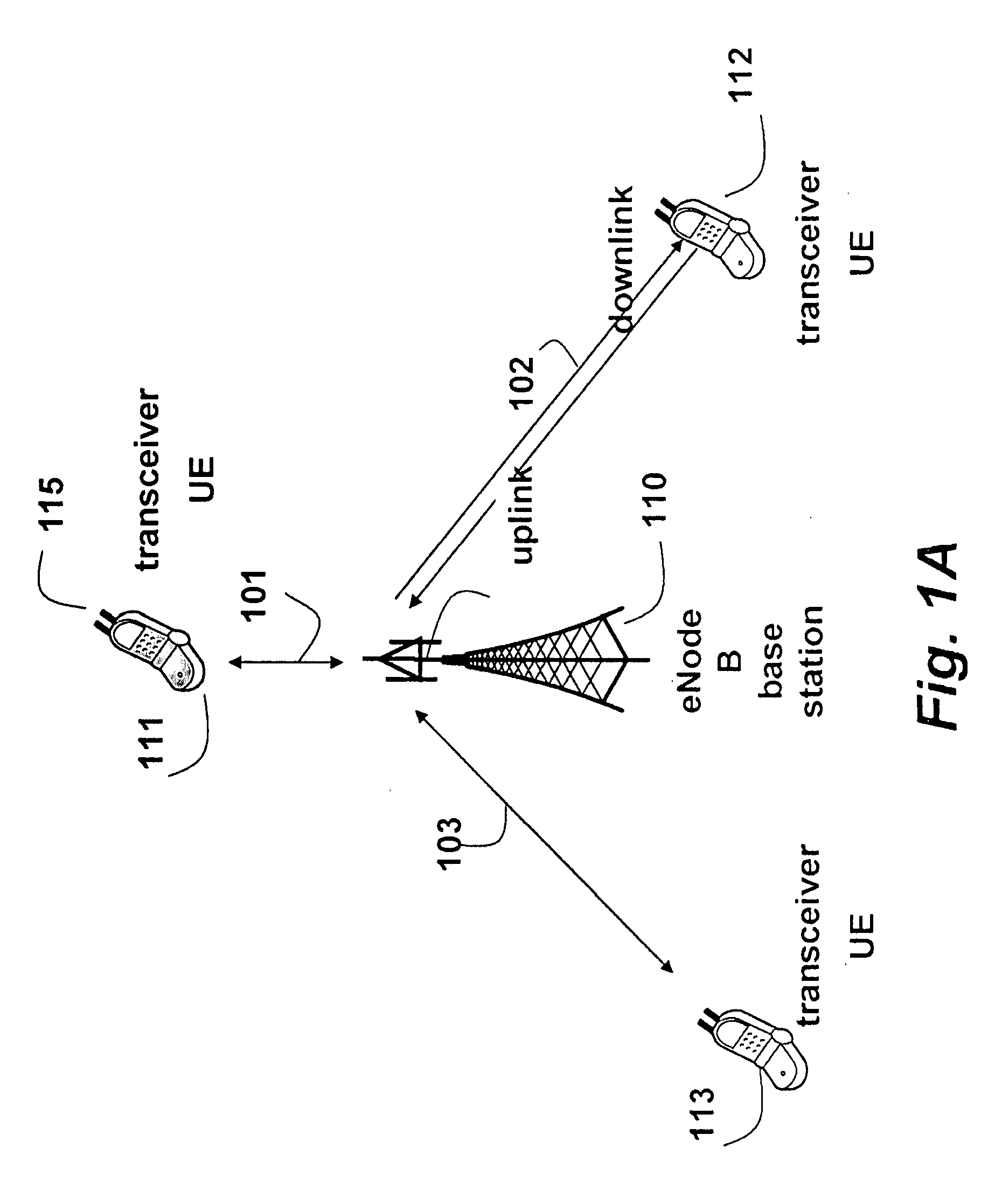Method for Implicit Selecting Antennas in a Wireless Networks
a wireless network and wireless network technology, applied in the direction of substation equipment, electrical equipment, wireless commuication services, etc., can solve the problems of limiting the universal application of mimo technique, power consumption and component size at the transceiver, and high cost of rf chain of mimo system,
- Summary
- Abstract
- Description
- Claims
- Application Information
AI Technical Summary
Benefits of technology
Problems solved by technology
Method used
Image
Examples
Embodiment Construction
[0037]LTE System Overview
[0038]FIG. 1 shows the general structure of an OFDMA 3GPP LTE wireless network according to an embodiment of the invention. Multiple user equipments (UEs) or transceivers 111-113 communicate with a base station 110. It should be understood that the base station also operates as a transceiver. However, hereinafter, reference to transceivers means UE, unless specified otherwise. It should be noted that invention can also be used with SC-FDMA and OFDM networks.
[0039]The base station is called an evolved Node B (eNodeB) in the 3GPP LTE standard. The eNodeB 110 manages and coordinates all communications with the transceivers in a cell using connections 101, 102, 103. Each connection can operate as a downlink from the base station to the UE or an uplink from the UE to the base station. Because the transmission power available at the base station is orders of magnitude greater than the transmission power at the UE, the performance on the uplink is much more critica...
PUM
 Login to View More
Login to View More Abstract
Description
Claims
Application Information
 Login to View More
Login to View More - R&D
- Intellectual Property
- Life Sciences
- Materials
- Tech Scout
- Unparalleled Data Quality
- Higher Quality Content
- 60% Fewer Hallucinations
Browse by: Latest US Patents, China's latest patents, Technical Efficacy Thesaurus, Application Domain, Technology Topic, Popular Technical Reports.
© 2025 PatSnap. All rights reserved.Legal|Privacy policy|Modern Slavery Act Transparency Statement|Sitemap|About US| Contact US: help@patsnap.com



